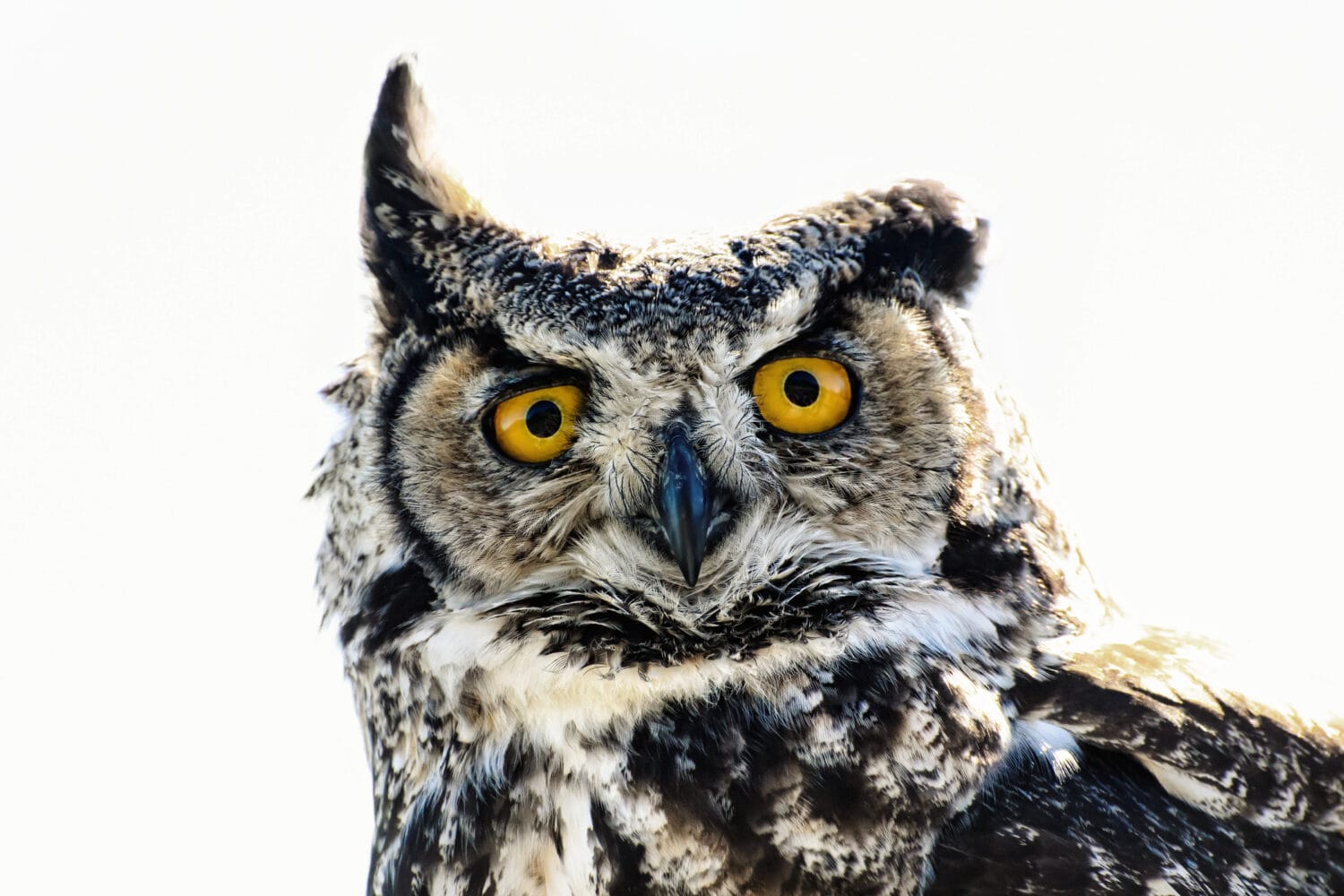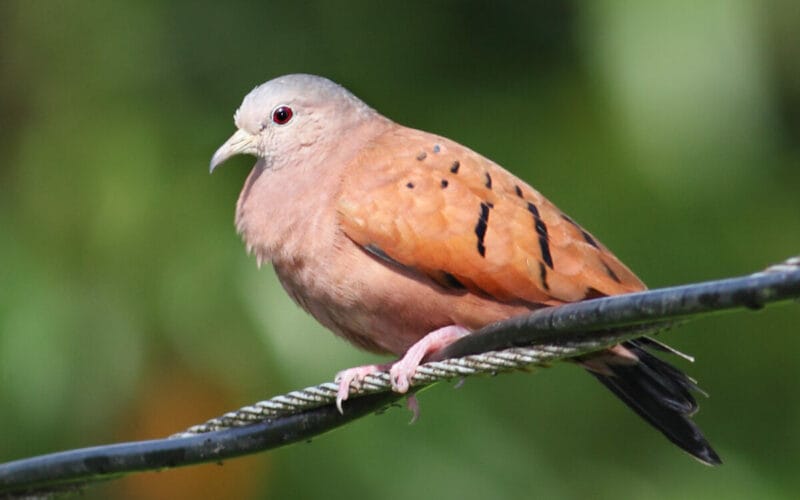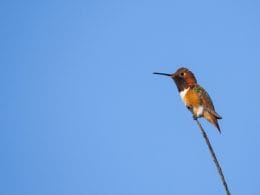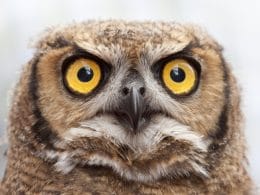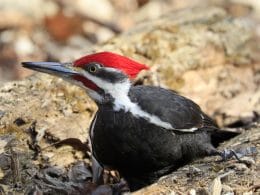The Great Horned Owl is an amazing creature of mythological status. While it might be widespread, most of us have never seen one. But we might well have heard them. In this post we will be looking its interactions and all the sounds it makes.

Where does the Great Horned Owl live?
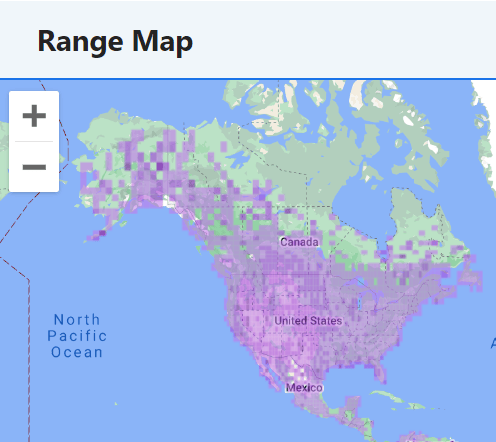
The first amazing thing about the Great Horned Owl is how adaptable it is to different environments. In the north, it reaches far into Canada and copes with the cold right up to the edge of the Arctic tundra.
As you can see from the eBird Range Map above, the Great Horned Owl is found all across the continental U.S. from coasts, forests and deserts. It is also present through Central America and is found in parts of South America.
Also interestingly, it does not migrate so whether it is in hot or cold environments, it breeds there too.

What do Great Horned Owls look like?
Sounds simple – they look like big owls, right? It isn’t quite so simple and differences in plumage might make it more tricky to identify them.
Size
A rough guide to how bit the Great Horned Owl is that they are about as big as a bowling pin, although they can get a bit bigger.
- Length: 18.1-24.8 in (46-63 cm)
- Weight: 32.1-88.2 oz (910-2500 g)
- Wingspan: 39.8-57.1 in (101-145 cm)
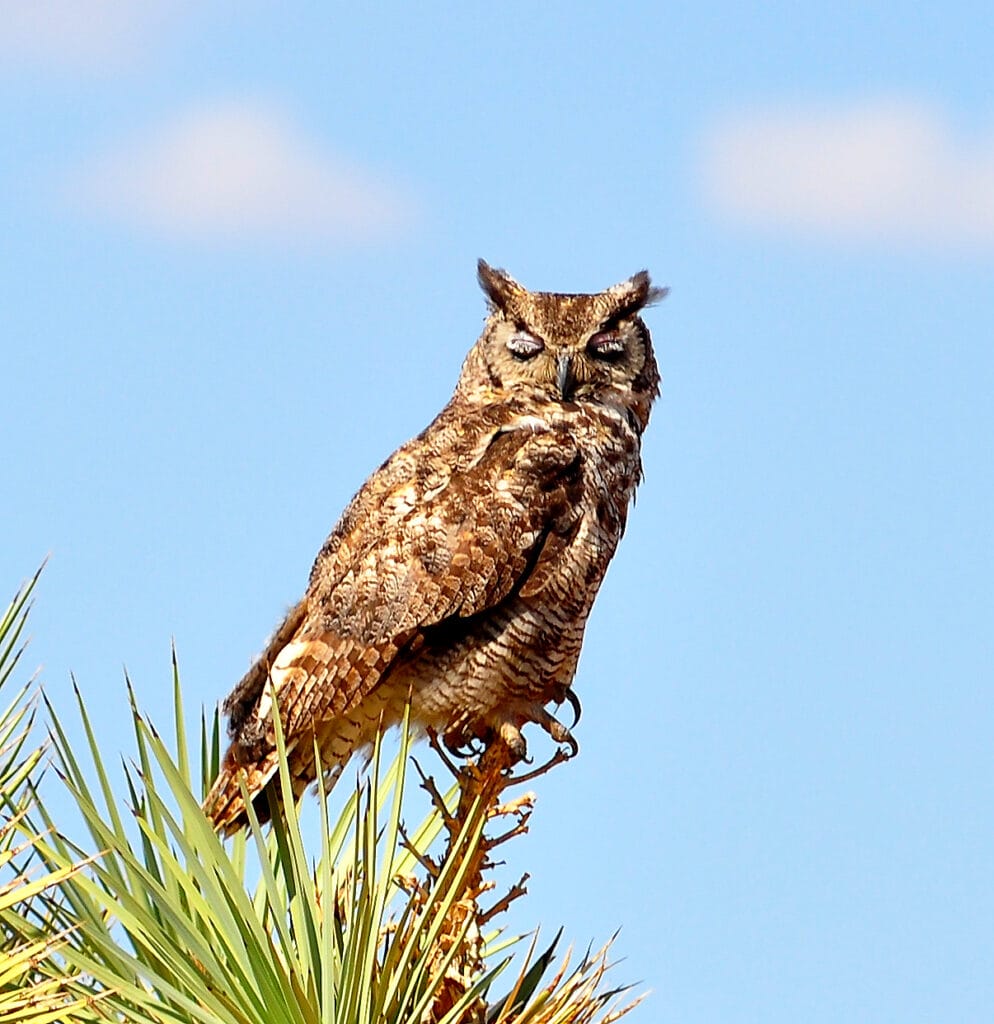
Plumage
Both sexes have similar coloring but this can vary with geography. Across the entire range, there are 14 subspecies and the North American owl found in the eastern side is scientifically named Bubo virginianus virginianus.
While the owl is generally very well camouflaged, the color of the plumage varies between gray, red and brown.
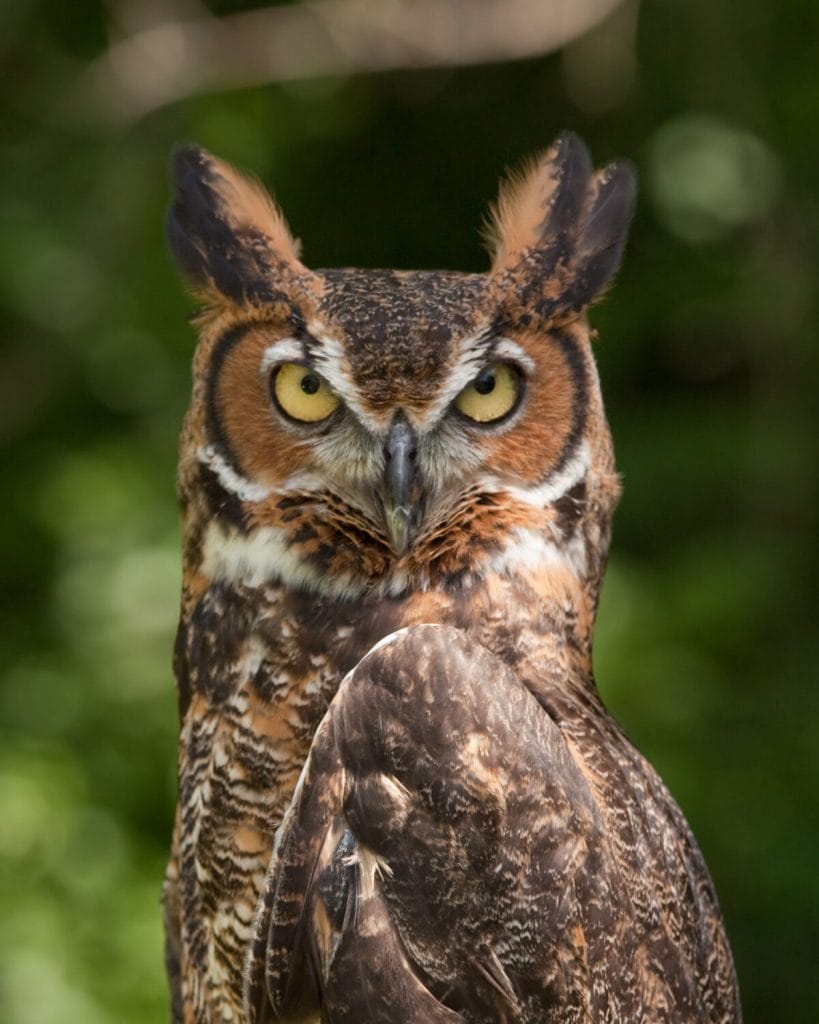
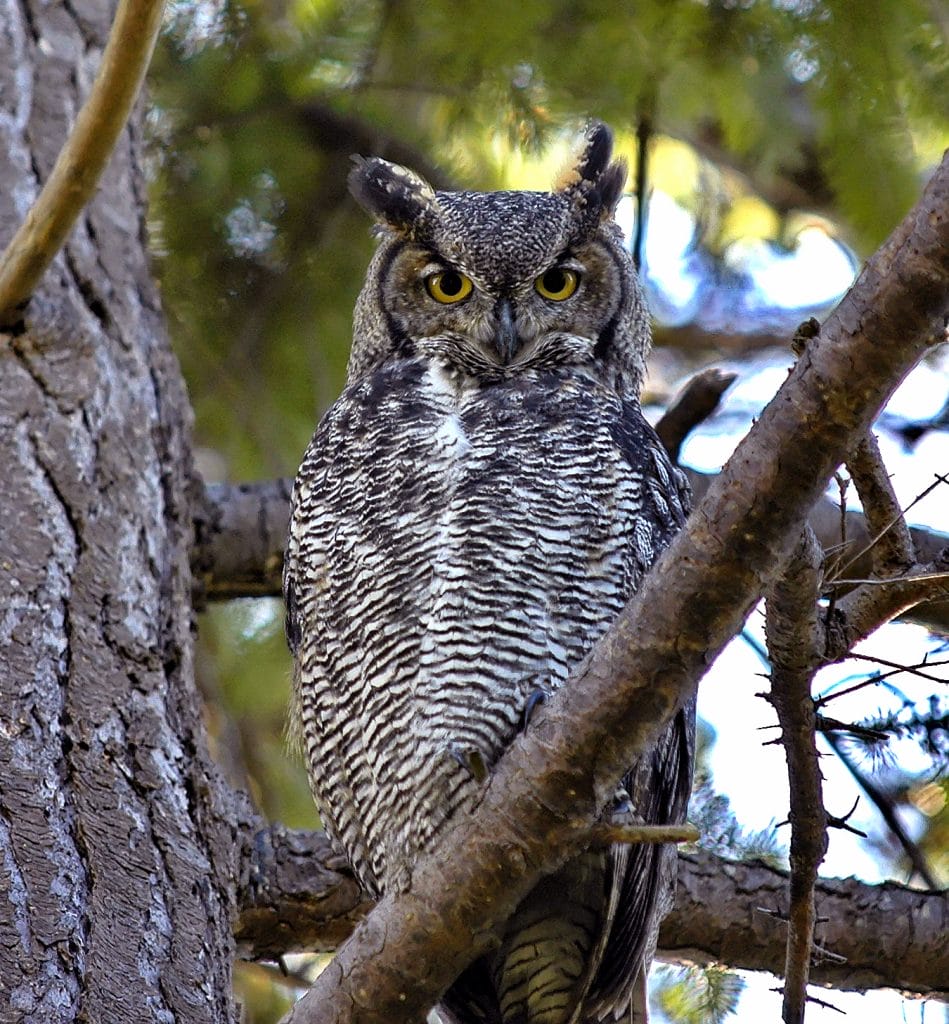
All Great Horned Owls have a significant amount of barring on the breast and belly. Usually this is dark gray. Also, they all have a distinctive reddish facial disc and large ear tufts. These can resemble horns from a distance, hence the name.
The owls are are dark gray to brown on the back with complex patterning to aid the camouflage effect.
What do Great Horned Owls sound like?
Courting
Although paired birds will stay together year after year, there is still some ceremony during the mating process. From October and through to January, the males will call to re-establish territory. It is the quintessential hoot we associate with owls. Such a delicious sound.

Here is a variation and less attractive territorial call.
Great Horned Owls are famous for their duetting. Presumably, when the male and female sing together they are reinforcing their pairing. The female calls at ta higher pitch, which you can hear:
Alarm
One of the duties of the male owl is to defend its territory so the female can incubate the eggs and brood the chicks. There are few predators of grown owls but they may be taken by an eagle or coyote. It is not likely, however, that they would be caught unawares.
Chicks, conversely, are in danger until they are independent. The adults will defend them, of course, but the first step is to alert everyone that some sort of danger is approaching. This is an alarm call.

Hatchlings
The female owl will lay between 1 and 4 eggs and incubate them for 30 – 37 days and she stays with the eggs during this period. The male will bring her food throughout the night.
Once the nestlings have hatched, the female stays with them and the male now feeds all of them. As we know, hatchlings and nestlings are primed to demand food. This sound is of hatchlings chattering. Sounds quite sweet!
Nestlings
As the chicks grow, so does their demand for food and here are a couple of recordings of begging. It is not an incessant call but clear enough!
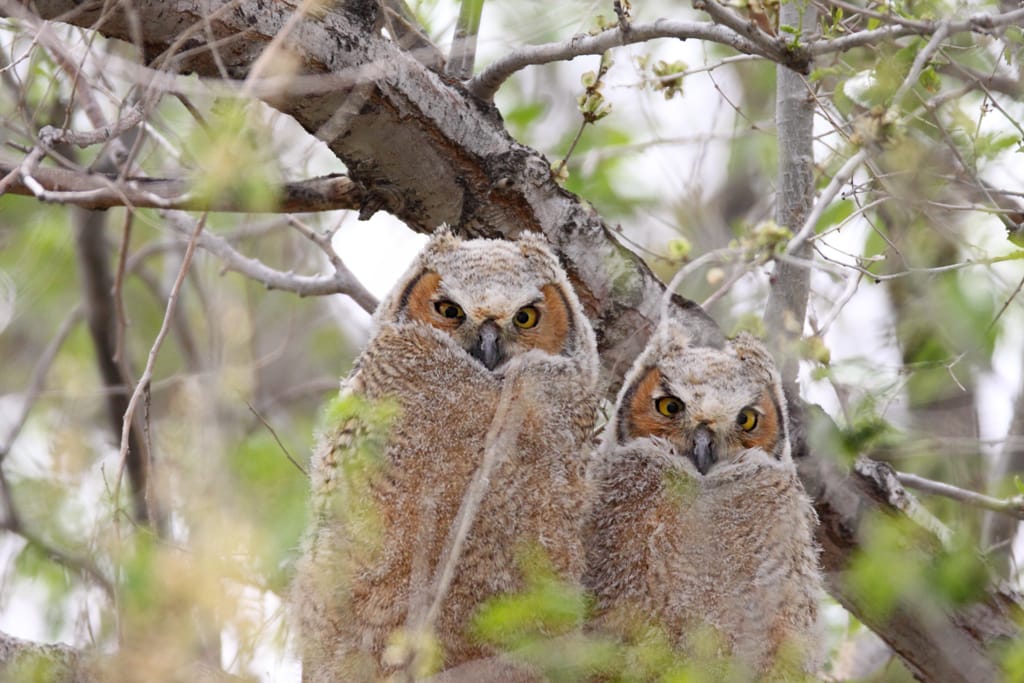
Other calls
Great Horned Owls have a range of other calls including screams, hisses and barks. Here is a call of a female squawking and a rapid burst from a male.
This next call is a high-pitched screech.
Conclusion
While we all know the definitive owl hoot, it is helpful to remember that owls, and our Great Horned Owl in particular, has a range of calls, songs and noises to use as the situation demands. It can be disconcerting to hear odd screams in the night and we always wonder what it is. Chances are – it is an owl.

FAQ
Generally, we refer to the hooting of the owl as a song. It communicates something important but mundane to others like presence or courting. A call would be a specific and more urgent sound like an alarm or young begging.
Owls hooting is just the same as birds singing in the day – they are communicating. There is nothing sinister or superstitious about it. We just hear them more clearly because of the lack of other noise.
I think it is because they are relatively sedate, have an imposing demeanor and the sing with huge gravitas. It doesn’t hurt that they can also move their neck around by 270 degrees!





